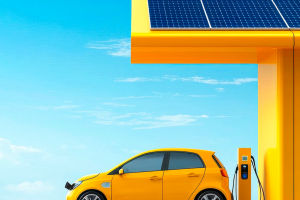
Lykkers, switching from a conventional vehicle to an electric one involves new habits, including understanding charging times.
Unlike refueling traditional cars, charging times for electric vehicles (EVs) depend on various factors, such as battery capacity, charging station power output, and the vehicle's charging capability.
Charging speeds vary significantly based on these elements. Some stations provide rapid power replenishment, while others are designed for slower, overnight charging. For those planning trips, knowing how long it takes to recharge can help optimize routes and make the most of available infrastructure. As of early 2025, over 60,000 charging points are available in Italy, ensuring convenient access to power sources for electric travel.
Why Choose an Electric Vehicle?
The increasing popularity of electric vehicles highlights several advantages. These vehicles contribute to lower environmental impact and often require less maintenance compared to traditional fuel-powered cars. Additionally, expanding charging networks provide greater convenience, making long-distance travel more accessible.
Modern applications allow drivers to locate charging stations along their route, displaying details such as available power levels, real-time availability, and payment methods. These features simplify trip planning and improve overall travel efficiency. Looking ahead, the cost of electric vehicles is expected to decrease, making them an even more attractive option for drivers worldwide.
Types of Charging Stations
There are four primary categories of EV charging points, each offering different power levels and charging durations:
- Slow Charging (up to 7 kW): Suitable for overnight charging, typically taking 12 hours or longer.
- Quick Charging (7-22 kW): Requires approximately 2-3 hours to charge a mid-sized battery.
- Fast Charging (22-100 kW): Capable of replenishing power in 30-60 minutes.
- Ultra-Fast Charging (above 100 kW, up to 350 kW): Can charge a battery within 10-25 minutes, ideal for travelers needing minimal downtime.
These estimates are based on a standard 50 kWh battery, though actual charging times depend on battery size and vehicle specifications.
Home Charging Solutions
Many EV owners prefer charging at home, using either a standard outlet or a specialized wall-mounted unit. Home charging options include:
- Standard Electrical Outlet (Slow Charging): Uses a common household socket, requiring extended charging times.
- Single-Phase Wall Box (Slow to Quick Charging): Offers power between 3.7 kW and 7.4 kW, suitable for overnight charging.
- Three-Phase Wall Box (Quick Charging): Provides 11-22 kW, reducing charging time significantly.
- Private Charging Station (Quick Charging): Similar to public stations, these can deliver up to 22 kW but may require additional installation approvals.
For those with home charging capabilities, installing a dedicated unit enhances convenience and ensures safe energy management.
Public Charging Infrastructure
When traveling, public charging stations are essential for maintaining an EV's power supply. Key types include:
- Alternating Current (AC) Stations (Quick Charging): Provide 7-22 kW and are commonly found in public parking areas and shopping centers.
- Direct Current (DC) Stations (Fast Charging): Deliver up to 100 kW, enabling an 80% charge in under an hour. These are often positioned along highways and main roads.
- Ultra-Fast Charging Stations: Typically located on motorways, offering more than 100 kW for rapid charging in just a few minutes, making them ideal for long trips.
Planning for Efficient Charging
To maximize an EV's efficiency, consider the following:
- Plan routes based on available charging points. Many apps provide real-time data on station locations and power levels.
- Opt for fast-charging options during road trips. Reducing downtime improves travel flexibility.
- Use home charging when possible. Charging overnight is convenient and cost-effective.
- Be aware of peak usage times. Some stations may be in high demand, leading to wait times.
With an expanding network of charging stations, traveling with an electric vehicle is becoming increasingly practical. By understanding the different charging options and planning accordingly, drivers can enjoy a smooth and efficient journey.


